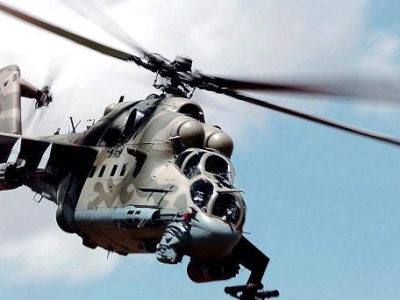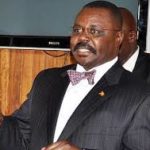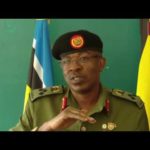A month after Somali insurgents attacked a UPDF base in Somalia, killing 19 soldiers, the commander Air Forces, Maj Gen Samuel Turyagyenda says Uganda is ready to deploy two helicopters for transport and four for combat to augment UPDF infantry. In this interview done by UPDF’s Magazine (Tarehe Sita) and sent to Eagle Online, Maj Gen Turyagyenda talks about the history of UPDAF, the Israel attack on Entebbe airbase in 1976 that left many air assets destroyed, and the crashing of the four helicopters in Kenya, en-route to Somalia.
Briefly tell us how UPDAF evolved to what it is today
Air Force was established in Jan 1964 with the enactment of 1964 Armed Forces Act. The first recruitment was done in 1964 by the Israeli’s. The emphasis was on recruits with aeronautical, mechanical, electrical engineers.
By 1975, Air Force had built capacity in terms of manpower, Equipment and infrastructure. It had operational Air bases in Gulu, Nakasongola and Entebbe and was capable of executing operational missions.
However, in 1976 most of the assets were destroyed on the ground by the Israeli raid during operation “Thunder Bolt”. The political turmoil during Amin’s reign saw many qualified pilots & Engineers either killed or fled the country.
The 1979 war saw the remaining aircraft either vandalized or taken away which made the Air Force to totally collapse.
But since 1986 UPDAF has been high on government policy agenda. We acquired some Bell and Agusta Utility helicopters from America and Italy respectively. They were not combat. But with time, it became necessary to search for multirole helicopters that could do both Utility and combat. The MI – 17 was the preferred choice. The UPDF fraternity referred to this ‘Skyhorse’ as “SURAMBAYA”
The white paper on Defence transformation in 2004 and later UPDF Act 2005 Created Air Force as a Service thus making the UPDF a bi-service. Since then, UPDAF (Air Force) has moved to acquire new and modern platforms.
Air Force has gone on to train its personnel (Pilots, Engineers and Technicians) from both inland and abroad in different capacities.
What are the major challenges the air force faces on this road to have a strong air force?
Generally, the major bottlenecks in professionalisation are many but the following are some of them are; limited budget to undertake the required training both new airmen as well as progressive experience building for pilots, Engineers, technicians and other support departmental personnel.
We also need trainers and operational aircraft. We also need enough fuel for training and operations. We need ground handling equipment and other logistical equipment.
It would also be better to have a well-established Aviation Academy to conduct local training which is cheaper compared to sending people abroad.
There is also limited Land to conduct training. Most of the land has been encroached.
What has been the role of UPDAF in the fight against violent extremist in the region?
First and foremost violent extremism is a global threat and in our region, the extremists have manifested themselves through Alshabab, ADF, and LRA and others. Whenever Air Force is called on, we have done Aerial Reconnaissance in Eastern, DRC, South Sudan and Northern Uganda to provide timely intelligence information to commanders.
We also air lift or deploy troops and resupply the required logistics. In Somalia, we do Aviation security, Meteorological, Fire and Rescue Services to AMISOM at Mogadishu airport.
These and many more, Air Force in support and collaboration with other Arms of UPDF, has played a significant role in combating extremism in the region.
What are the combat challenges you faced fighting extremism?
Fighting extremist is or asymmetrical warfare where there is no frontline. The enemy will mix with the population and identification is a problem.
Another challenge is poor coordination affecting timely response. There is need to acquire modern equipment intelligence, surveillance, and target (ISTAR) assets to provide accurate information. Difference in doctrine of different countries is another challenge. We do not have the same doctrine and therefore have different training and operational methods. As I mentioned earlier, lack of helicopters, trained personnel and other logistical requirements pose a big challenge when fighting extremism in our region.
We are aware that UPDAF has been making some preparations for the deployment of Air craft in Somalia. How prepared in Air Force for the mission?
As you are aware, following the tragic accident of 2012 when we lost helicopters in Kenya en-route to Mogadishu, we went back to the drawing board; we have been preparing and now we are in advanced stages to deploy.
The helicopters to deploy are ready, personnel have been trained both in Nairobi and in Uganda, basically all preparations have been made and very soon we shall deploy.
Who is going to fund this operation? And how many aircraft are ready for the mission?
This is an African Union Mission in collaboration with the United Nations. The UN Security Council Sanctioned the deployment of air assets to Somalia as both force multipliers and force enablers. African Union will fund the mission.
As for the number of aircraft, we are looking at initially deploying Six–two for transport, and four for combat. However, in case of necessity we hope to increase the numbers later.
Is the deployment going to be done by UPDAF only?
Absolutely it will be done by Ugandans. Uganda is a troop contributing country and will undertake the mission.
Has UPDAF got involved in such a multinational operation anywhere in the world?
No! This is the first of its kind.
What do you see as the major Air Force achievements since 1986?
There are a lot of achievements which include but are not limited to increase in asset base. There was no Air Force to talk about in 1986. But now it is a service Force with assets, and personnel. We have also expanded in area of operation. We now have four operational bases of Gulu, Soroti, Nakasongola and Entebbe. In addition we have an Academy in Nakasongola and an Air Force Garrison.
We have increased the level of training of our personnel both in professional/technical and military aspects.
Air Force has been instrumental in the defeat of all insurgents in Uganda, LRA, Lakwena, and ADF. In additional, Air Force was instrumental in battles against cattle rustling and disarmament operations in Karamoja.
Air Force has also been instrumental in operations other than war especially natural disasters. Examples floods in Teso, Kasese and Landslides in Bududa.
What change will the deployment of air assets cause in the operations against al shabaa?
The deployment of aircraft to Somalia will be a game changer. It will entirely change the course of operations. Troops will be airlifted and to and from the frontline quickly. They may also be deployed behind enemy lines positioned. Logistical supplies will be easy and above, all the fire power delivered from the combat helicopter will substantially help to conclude the war more quickly.
Where do we see Air Force in the next twenty years?
In the next twenty years, Air Force will be modern with enough trained and qualified Pilots, engineers, Technicians and other support personnel. Air Force will have adequate modern platforms that can appropriately respond to internal, regional and continental threats. We will expand not only in size and numbers of the equipment and personnel, but also in coverage.







